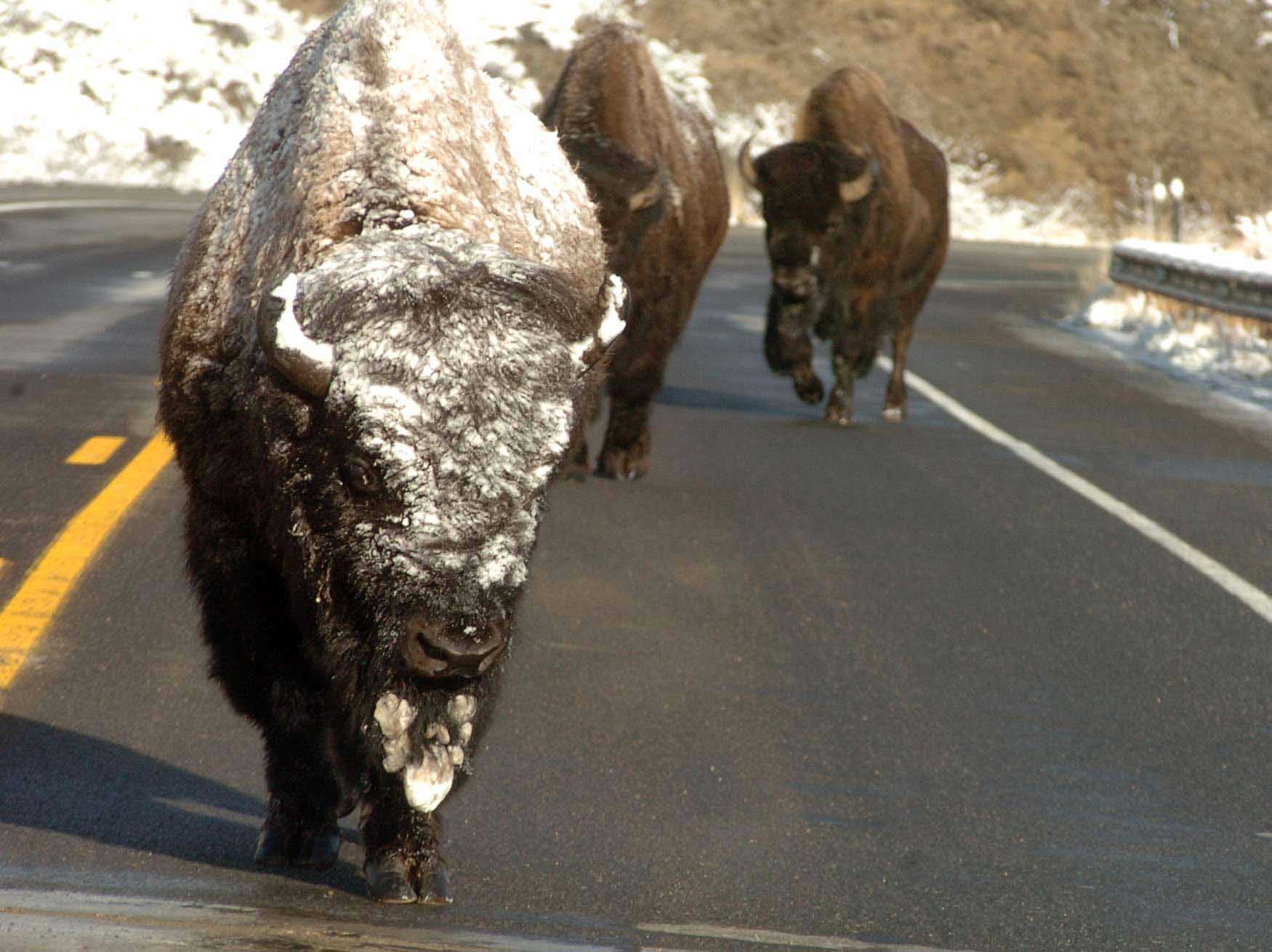
From Staff Reports
Motorists across the greater Yellowstone area should expect to see more wildlife than usual on roads over the next few weeks, as warm weather and new grass have animals on the move as part of their annual spring migration patterns.
Elk, bison and other large mammals are beginning their trek from winter range back to summer pastures, and it’s not uncommon for them to cross highways in large numbers. Wildlife returning to Yellowstone and Grand Teton national parks may even use roads as travel corridors, particularly in places where deep snow drifts or plowed snow prevents easy use of alternate routes.
As snow continues to melt, elk and bison are now migrating from the National Elk Refuge toward their traditional summer ranges in Grand Teton National Park and surrounding national forests, according to information released Friday by the Grand Teton National Park public affairs office.
Park officials advise drivers to be alert for wildlife on the move and to drive with extra caution during the coming weeks. Highway 26/89/191 and nearby roads are especially likely to see increased wildlife activity.
Animals often move during low light conditions and generally are most active between dusk and dawn. Moose around Grand Teton park can be found browsing in both the sagebrush flats and riparian areas such as the Gros Ventre River and Buffalo Fork of the Snake River just south of Moran Junction. Drivers may also encounter mule deer, wolves, bears and other animals on or near park roads, and pronghorn antelope will soon make their way back to Jackson Hole.
Visitors and local residents should keep their distance from all wildlife, maintaining a buffer of 100 yards from bears or wolves and 25 yards from other wildlife, including nesting birds. Animals are typically weakened from the rigors of a Wyoming winter, and are easily stressed.
Public closures are now in effect near sage grouse leks throughout Grand Teton. Visitors to these areas must obey the posted closures to reduce disturbance to sage grouse using their traditional mating arenas. Wildlife protection closures will be in place for the next 4-6 weeks while birds are present.
Motorists are advised to drive the posted speed limit and be prepared to stop suddenly when animals cross the road unexpectedly. Driving slower than indicated speed limits, especially at night, can increase the margin of safety. Collisions between motor vehicles and wildlife may result in severe damage to the vehicle, serious or fatal injuries to occupants and death for the animal.
Contact Yellowstone Gate at 307-213-9818 or [email protected].
